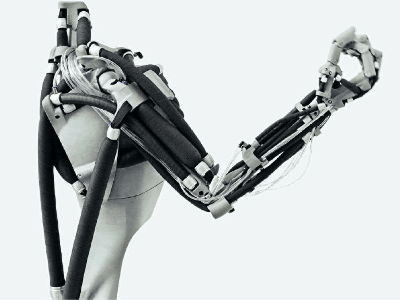Robot "RoboBee" that can fly in the sky and swim underwater though it is an insect size

There are things that lightly move ones that are many times their own weight, organisms that have the ability to inject explosively more than 100 degrees of gas, things that move a distance more than 100 km a day, There are a lot of things that have amazing power in a body much smaller than a human being. There are many robots imitating such creatures of nature, but insect-sized robots that can fly newly to swim in the sky or swim underwater "RoboBee"Was developed by Mike Robot Laboratories of Harvard University.
Dive of the RoboBee | Harvard John A. Paulson School of Engineering and Applied Sciences
http://www.seas.harvard.edu/news/2015/10/dive-of-robobee
Vehicles that freely move around both underwater and in the air may appear in science fiction movies etc, but vehicles moving in the air will need huge wings to create lift, whereas vehicles moving in the water The surface area should be small to minimize resistance. In this way it is necessary to satisfy two contradictory conditions at the same time in order to create a vehicle moving in the water and in the air, which has been considered to be very difficult.
Dr. John Paulson of Harvard University has solved this problem. Dr. Paulson's attention was focused on the fact that "Punctu"is. It is not an exaggeration to say that this puffing machine is the most adaptive to both underwater and air in nature, you can swim underwater as well as not just flying around in the air with 2 wings.
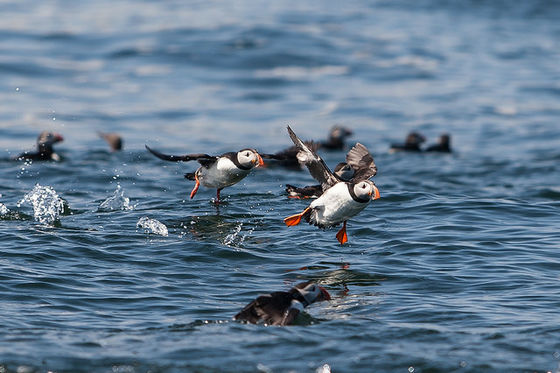
ByTony Smith
Kevin Cheng, who has been studying with Dr. Paulson at Harvard University's Micro Robotics Institute, said, "We repeated demonstration experiments based on various theories and calculations, and we finally got the propulsive power by bird flapping. It is very similar in air or underwater, "he says. Continuing "In both cases (when moving in the air and underwater), puffed puff moves the wings back and forth with the back and forth, the only difference was the speed of the wings' movement."
The research team developed RoboBee, a robot that can freely move around the sky and underwater by applying this finding to small robots. The state that such RoboBee is actually moving can be seen in the following movie.
RoboBee: From Aerial to Aquatic - YouTube
This is RoboBee. It looks like a bamboo dragon or something rather than a robot, which is equipped with two like mosquito feathers.
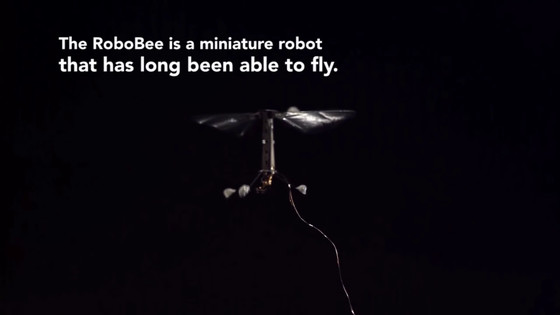
Although it seems that RoboBee is flying at the very moment in the sky, it does not move the two feathers greatly.
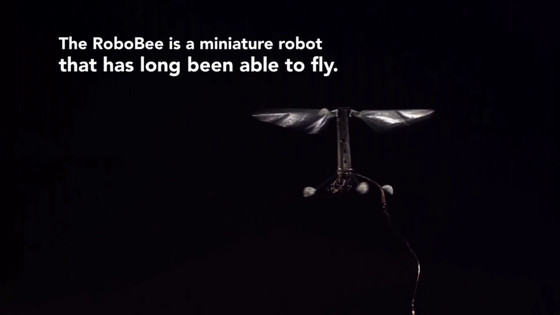
But looking closely, it seems like moving the wings very fast and flying in the sky. I am wandering around the air in front and behind and left and right.
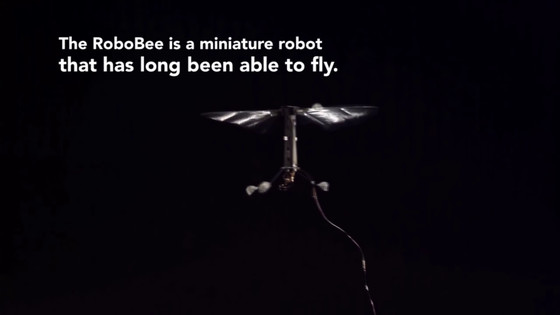
RoboBee is in the red frame part.
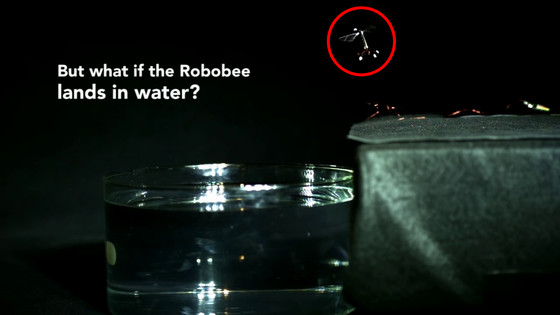
While this drifts fluffy ......
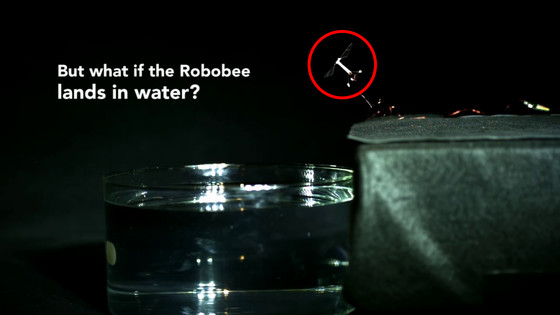
I have lost water.
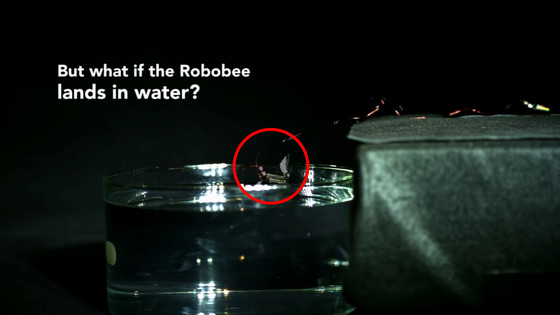
RoboBee sinks as it is.
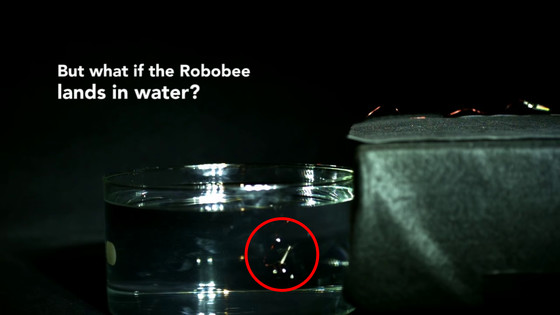
It is RoboBee who has sunk in the water, but by using the latest flapping technology, it is possible to swim underwater.
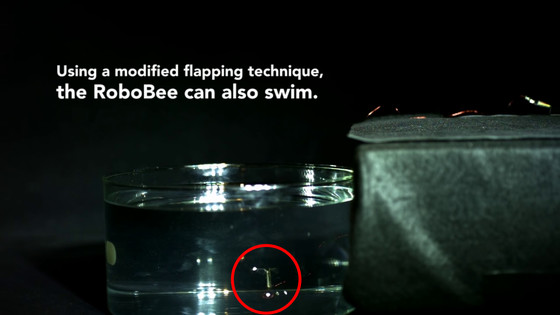
And I started to float.
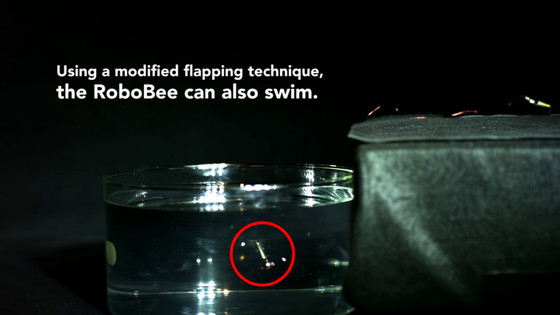
Looking at the figure that RoboBee swims up like this.
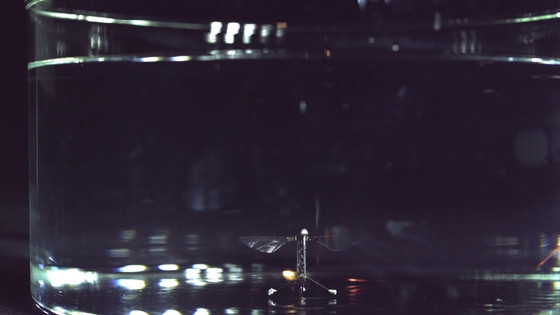
Puker
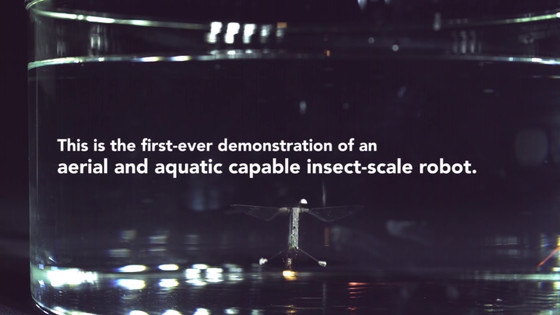
When flying in the sky, move feathers that did not let me make it tremor like a bird with a scatter and move underwater.
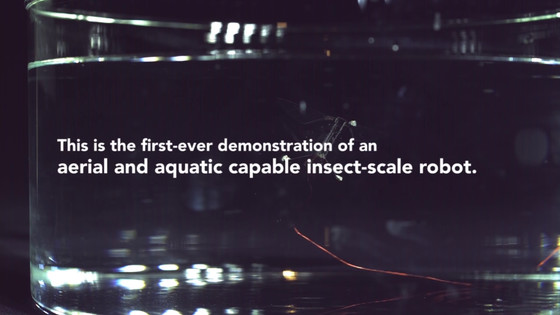
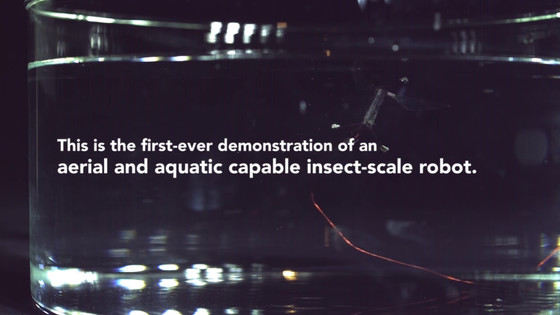
RoboBee is smaller than paper clip, but it floats in the air like an insect. Even if you see RoboBee flying in the sky, you can not confirm with the naked eye that the two feathers are moving, but in fact it is said that the feathers are vibrating at 120 super high speeds per second It seems that lift is being created by.

Also, since RoboBee is very small and light, it seems that it was impossible to break into the water by breaking the surface tension of water at the beginning of development. However, in order to overcome this, RoboBee stops the movement of the wing after adjusting the water inlet angle, and is able to invade underwater by hitting the water surface. It seems that the scene that just looked like a falling water when viewed in the movie was actually "this is the only" approach that was made on various calculations.

With this, RoboBee finally put it in the water, but since the weight of the water is about 1000 times that of the air, if the flapping speed in the water is made the same as in the air, the wing easily breaks . Therefore, it is possible to move in the water by dropping the flut of 1 second from 120 times to 9 times. In addition, RoboBee seems to change the swimming direction by adjusting the angle of wings when swimming underwater.

The cord extending from RoboBee connects the main body and the power source, and it seems that special coating is preventing the short circuit in the water. However, although it is currently possible to move from the air to underwater, it is impossible to move from underwater to the air, which is said to be because "one wing is always broken when leaving the water."
About this research Chen said "The most exciting thing is that the analysis results on" flapping movement "of this research are not limited to insect size vehicles." Since various creatures flapping and moving from palm-sized insects to meter-class birds, there is also a good possibility that something of a larger size will appear in the future as much human beings can get in.
Related Posts:






